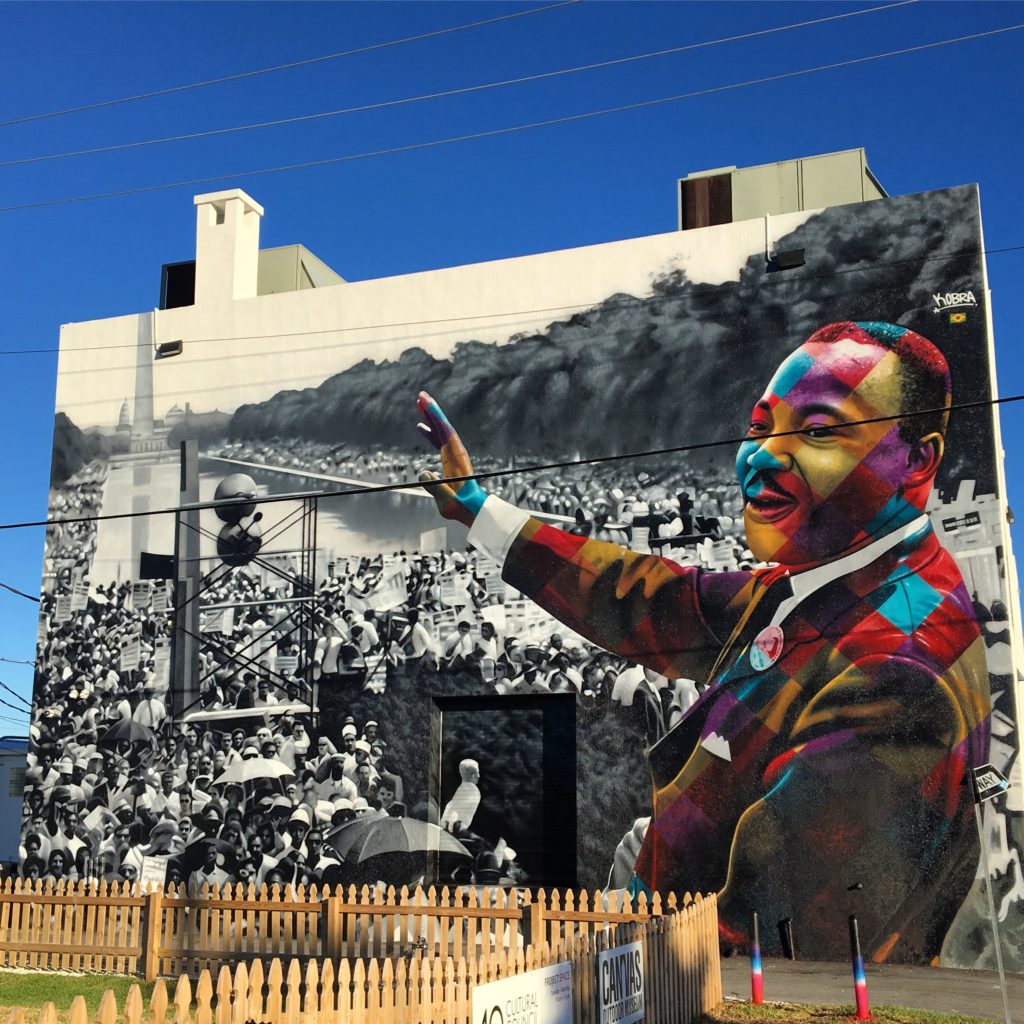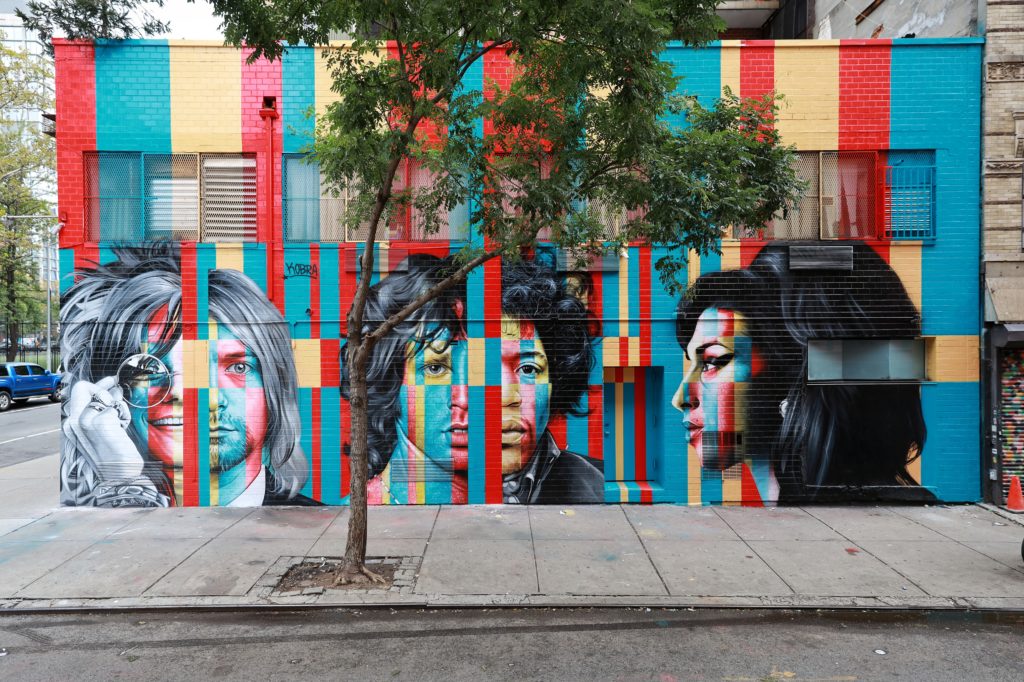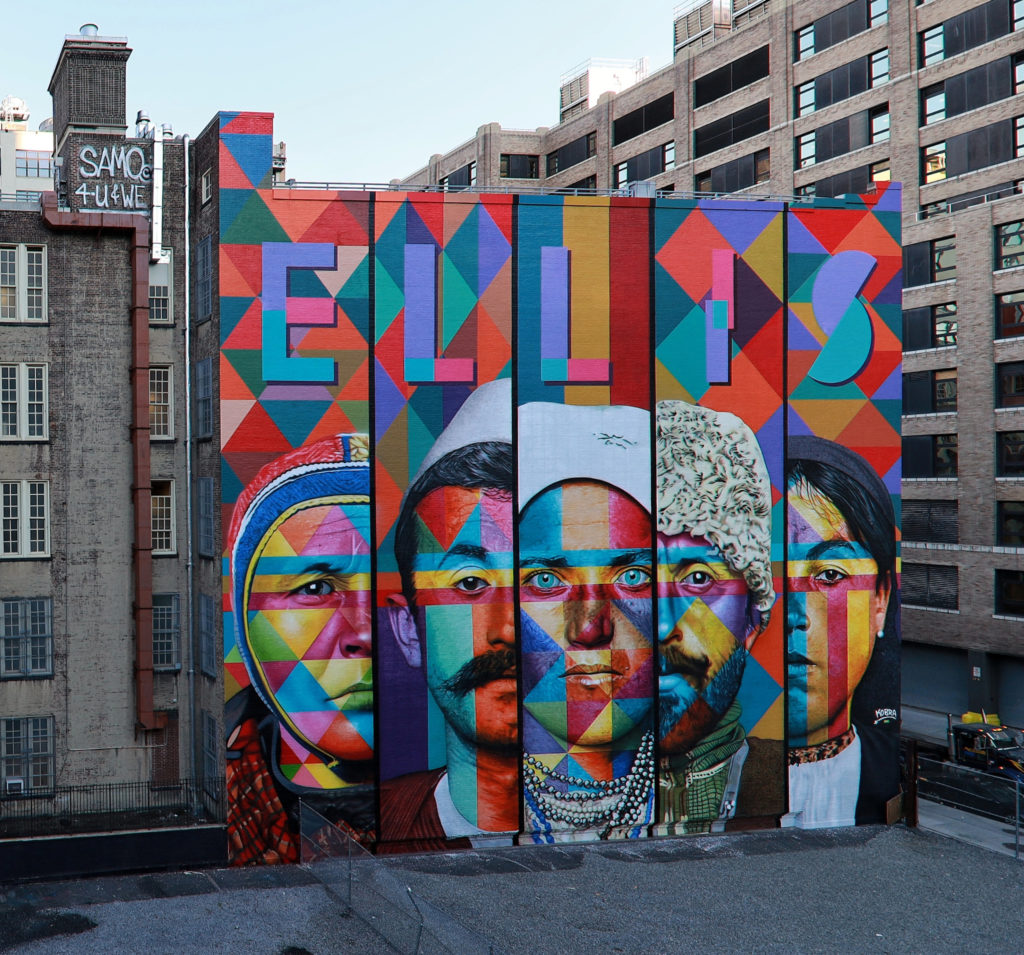1.Tell us what you do and your beginnings.
My work navigates the universe of street art. Everything started in 1987. I was just a kid, 12 years old. Everything I learnt and developed was done intuitively, as a self-taught, on the outskirts of São Paulo. Everything started when I was 8 years old, with drawings on a notebook, and later when tagging illegally on the streets.

Following that, in 1990, I started to do my first graffiti artworks, also done illegally. And after that, in sequence, the murals, which I’ve been doing until today. But I also like to use other mediums and materials; to me, the streets represent my atelier, my studio, and the possibility of bringing art to many people.
2.What does your work aim to say?
My art is an extension of who I am, of everything I believe in; my values, my principles, my family. It’s not just about aesthetics, I like to convey important messages in my artworks, speaking of causes that I’ve been involved with at any moment in my life or that I still am involved with. Causes that I believe in or want to address in art form.
My art is a conduit for transformation/change. I like to use my murals as a means to raise awareness of many issues, such as animal protection, indigenous peoples, environmental protection, history, remembrance, violence, racism, peace and coexistence between peoples and different religions, etc. I also talk about people who fought for peace and served humanity.

3.Where do you find inspiration for your art?
My inspiration is in everything that I see, all the places I’ve visited/been to. I can find it in all situations that I observe in life, whether they are positive or negative. It’s in things like social inequality, questions concerning humanity’s imbalance towards using natural resources, respect for others, tolerance.

Now that I’ve been to all 5 continents, every culture, people, tradition, religion, all these things have become a source of inspiration for my work. Additionally, people from humble origins that have important things to teach us, people who dedicated their lives to social causes and so many other things that I’ve found out in my researches, during my travels, etc.
4.Could you give us some insight into your creative process?
Continue on #MuseumWeek Magazine.
